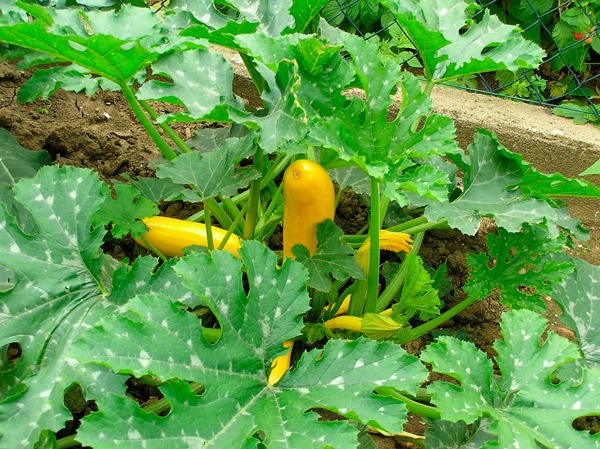Squash (along with corn and beans) is one of the oldest foods grown in the Americas. Squash is believed to have originated in Mexico and Central America where people have been eating it for at least 7,500 years. Today, squash is grown all over the globe.
Growing your own squash is easy, fun for the kids and likely to produce a crop that feeds the whole neighborhood. If you grow it from seed, you also can try growing some of the unique varieties that have been hybridized over the centuries, the fruit of which is unlikely to be found in the produce section of your local grocery stores.
Follow these tips for success in growing superb summer squash this season:
Squash plants are warmth lovers. The soil needs to be warm, at least 60 degrees at 2 inches depth. If planted when the soil is too cool, the seeds will rot. To get an early start, warm the soil before planting by laying down clear plastic on the prepared planting site.
Plant squash in full sun in fertile soil. Sow the seeds 1 inch deep; space the plants according to seed packet instructions, usually between 18-30 inches apart, depending on the variety.
Some gardeners plant squash in “hills,” sowing four or five seeds per hill. (Note: The term hill means a clustering of plants, not a mound of soil.) Space hills 3-4 feet apart. When the plants are 2-3 inches tall, thin to two or three plants per hill by snipping off unwanted plants; pulling them out can disturb the roots of the remaining plants.
Summer squashes are heavy feeders. If you incorporated organic matter into the
oil prior to planting, there is no need to fertilize early in the season. However, when the plants begin to blossom, a side dressing of a fertilizer low in nitrogen, such as 5-10-10, might be beneficial.
A steady water supply is necessary for the best quality fruit. Water deeply once a week to encourage deep root development, applying at least 1 inch of water. Mulch plants to retain moisture and discourage weeds.
Squash plants have separate male and female flowers. The male flowers, which usually appear before the female flowers, grow on bare stems. Female flowers show a tiny squash at their base and must be pollinated (commonly with the help of insects) to set fruit. You can improve yields in small plantings (fewer than five plants) by using a small paintbrush to spread pollen from male to female flowers, supplementing insect pollination.
For tender and flavorful summer squash, harvest the fruit when they are very young, no more than 6-8 inches in length. A large squash can become seedy and gain a mealy, undesirable taste. Cut the squash off the vine rather than breaking it off.
Squash blossoms also are edible. Harvest male flowers as they are just opening; remove the inner parts and use the petals to add color to appetizers and salads.
If you’re looking for a vegetable that’s easy to grow and produces huge yields, you can’t beat summer squash.
Pearl of Wisdom
Giant zucchini are not always as desirable as young and tender zucchini, but they are edible. They can be shredded (and frozen) and used in soups, breads, cakes and spaghetti sauce. Monster zucchini can be grilled or stuffed with a variety of ingredients. In addition, if the skin of a large zucchini toughens up, it will store for a relatively long time.
For more
For more gardening information, attend the Brown Bag Series at the Clallam County Courthouse. These free educational events are held at noon on the second and fourth Thursday of each month. On July 28, Jefferson County Extension Director Laura Lewis will talk about “Deconstructing Dinner.”
Jeanette Stehr-Green is a WSU-certified Clallam County Master Gardener.
Zucchini with Fresh Rosemary
by Barbara Heckard, Clallam County Master Gardener
Ingredients:
1 clove garlic, sliced thin
2 Tbsp. olive oil
4 zucchini, sliced
1 tsp. fresh rosemary or ½ tsp. dry rosemary
salt and pepper to taste
½ cup Parmesan cheese
Sauté garlic in oil and add zucchini. Add rosemary, salt and pepper. Cover and simmer until barely tender, about 5-6 minutes. Serve and sprinkle with Parmesan cheese.


